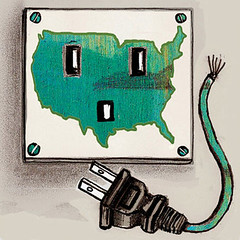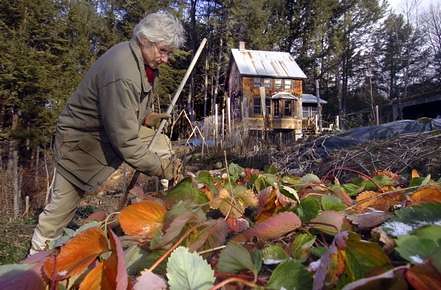
Children gathering potatoes on a large farm, vicinity of Caribou, Aroostook County, Me. Schools do not open until the potatoes are harvested (LOC)
Originally uploaded by The Library of Congress
The agroindustrial machinery (as Julia Whitty calls it in her article, Diet for a Warm Planet) currently in place around the world is a major contributing factor to carbon emissions. Changing what we put on our plate and thinking more carefully about how we produce and distribute food could go a long way toward curbing global warming.
Simply eating less could have a positive impact on reducing carbon emissions, Julia noted.
Seriously. Body fat. My personal flab is not just a private matter between me and my coronary arteries. Nineteen percent of US energy usage—about as much as is used to fuel our cars—is spent growing and delivering food to the average American who consumes 2,200 pounds of food a year. That's a whopping 3,747 calories a day—or 1,200 to 1,700 more than needed for personal or planetary health. The skinny truth is that as much as 7.6 percent of total energy in the United States today is used to grow human fat, fat that translates to 3,300 pounds of carbon per person.
Sure, liposuction is an untapped fuel source—and New Zealander Pete Bethune extracted 3.38 ounces of his own fat to add to the biofuel powering his carbon-neutral boat, Earthrace. But a more sustainable strategy would be to avoid growing the fat in the first place. A comprehensive Cornell University study found that we could cut our food energy usage in half by simply eating less, cutting back on meat and junk food, and considering the source of our food.
For starters, half of our food energy use comes from producing and delivering meat and dairy. If we gave up just meat, we could maintain that hefty 3,747-calorie intake but consume 33 percent less in fossil fuels doing it. If Americans cut just one serving of meat a week, it would equal taking 5 million cars off the road.
One-third of those 3,747 daily calories comes from junk food—potato chips, soda, etc. We can save on fossil fuel costs in this area by installing more efficient lighting, heating, and cooling in the plants that make the stuff and by using less packaging materials. But we'd save a lot more if you and I simply bought less of it. A can of diet soda, for instance, delivers only 1 calorie of food energy at a cost of 2,100 calories to make the drink and the can. Transporting the components and the finished product costs even more, and shipping processed food and its packaging accounts for much of the problem of America's food averaging 1,500 travel miles before it's eaten.
Changing habits--especially habits as personal as dietary preferences--is never easy, but it's worth considering that what we put in our mouths may be pushing us a few steps closer to global warming disaster.








